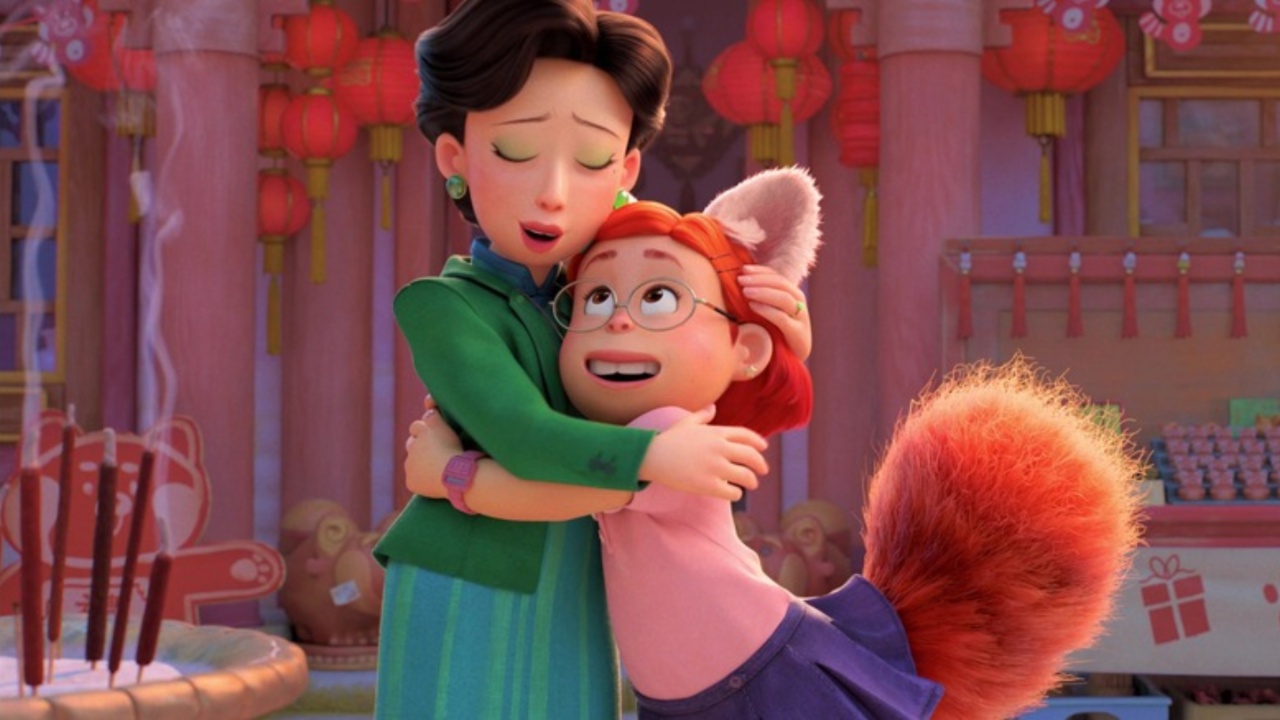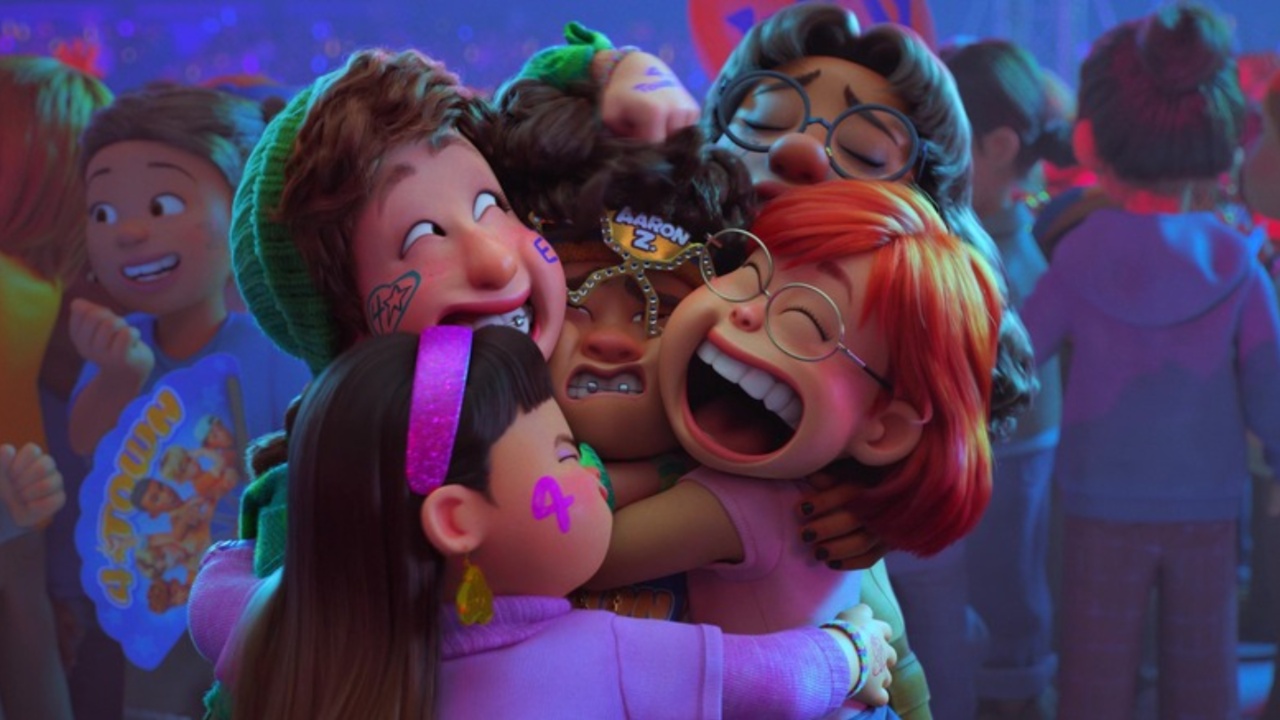Turning Red, directed by Domee Shi and co-written with Julia Cho, is Pixar’s lively exploration of adolescence, family, and self-discovery. Released on Disney+ on March 11, 2022, the film features the voice talents of Sandra Oh and Rosalie Chiang. Set in 2002, it follows 13-year-old Meilin “Mei” Lee, a confident and energetic girl who is very close to her overprotective mother, Ming. While Mei seeks her mother’s approval above all else, she also enjoys her friendships and wants to express herself, which creates tension as she experiences the physical and emotional changes of early adolescence.
Mei’s life changes dramatically when she discovers that she can transform into a giant red panda after an embarrassing incident triggers the change. This magical transformation is both literal and symbolic, representing puberty and the emotional upheaval of growing up. The red panda disrupts Mei’s daily routines, affects her friendships, and complicates her relationship with her mother. At first, Mei struggles to understand her feelings and fears that the panda may isolate her from those she loves. The transformation shows the intensity and unpredictability of early adolescence.
Mei Confronts Generational Trauma and Embraces Her Identity Through the Red Panda
A central theme of Turning Red is the complicated relationship between Mei and Ming, which reflects patterns of generational trauma. Ming’s overprotectiveness comes from her own strained relationship with her mother, who did not approve of her marriage to Jin. This past experience shaped Ming into a controlling parent. Mei experiences similar pressure as she tries to earn her mother’s approval while feeling misunderstood. The film illustrates how family tensions can persist across generations and shows that confronting these patterns is necessary for growth and healthier family bonds.

By the end of the film, Mei learns to accept and embrace her red panda form. Initially, she is frightened by the panda’s power and unpredictability, but she gradually gains control and recognizes it as a strength rather than a weakness. Unlike her mother, grandmother, and aunts, who had long suppressed their connection to the panda spirit, Mei chooses to keep the red panda as part of her identity. This decision reflects her self-acceptance and her readiness to face the changes of growing up on her own terms.
The Red Panda Symbolizes Growth, Courage, and Emotional Transformation in Mei’s Adolescence Journey
The red panda carries deep cultural and personal significance in the story. Mei’s ancestor, Sun Yi, channeled the red panda spirit to protect her village and family, linking the animal to themes of balance, protection, and responsibility. Director Domee Shi described the red panda as a metaphor for the awkward and intense changes that occur during adolescence. The mystical aspects of the panda reinforce the film’s message that embracing oneself and one’s emotions is essential for growth and happiness.
The setting in 2002 adds context and nostalgia to Mei’s story. Domee Shi drew inspiration from her own teenage years, choosing a time before widespread social media to highlight simpler experiences of growing up. Elements such as boy bands, Tamagotchis, flip phones, and fashion trends ground the story in a specific cultural moment, making Mei and her friends feel authentic. The period setting allows the narrative to focus on Mei’s personal development and family relationships without the distractions of modern digital life.
Turning Red emphasizes the importance of embracing emotions, accepting change, and asserting personal identity. Mei’s decision to remain a red panda represents courage, self-acceptance, and the willingness to face uncertainty while maintaining her relationship with her mother. The film shows that growing up inevitably changes family dynamics, but these changes do not have to weaken family bonds. Instead, the story celebrates the strength that comes from understanding oneself, confronting fears, and establishing independence. Turning Red is ultimately a heartfelt tale about adolescence, identity, and the transformative power of family love.



